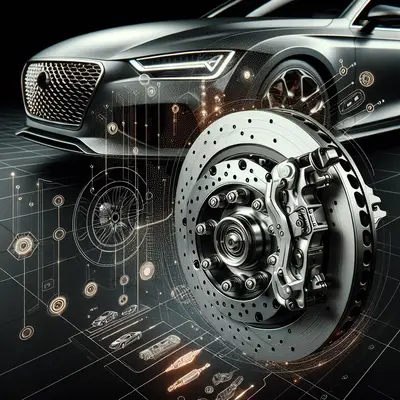The Symphony of Material Selection
Brake components aren't just pieces of metal—they are carefully orchestrated symphonies of materials. The choice between organic, semi-metallic, or ceramic brake pads significantly impacts the performance and longevity of the brake system. Each comes with unique characteristics: organic pads offer smooth, quiet stopping but wear quickly, semi-metallic pads are durable and offer good heat dissipation, while ceramic pads provide the best of both worlds but at a premium price. Understanding these nuances allows for a tailored braking experience.
The Nuance of Brake Fluid
Often overlooked, the brake fluid is the lifeblood of your braking system. Its primary function is to transmit the force from the pedal to the brake pads. However, brake fluid is hygroscopic, meaning it absorbs water over time, which can lead to reduced braking efficiency and potential system damage. Regular fluid changes, using the correct specification fluid, is an essential, yet often underappreciated, aspect of brake maintenance.
The Precision of Rotor Resurfacing
Brake rotors provide the frictional surface for the brake pads. Over time, they can develop grooves and pits, reducing the effectiveness of the brakes. Rotor resurfacing, when done correctly, can restore the smooth surface essential for optimal braking. However, it's a delicate balance—too thin a rotor can lead to brake failure. Knowing when to resurface and when to replace is a key insight for maintaining brake safety.
The Art of Brake Balancing
In a well-balanced brake system, each wheel contributes evenly to the overall stopping power. An imbalance can lead to longer stopping distances and uneven tyre wear. Regular inspections and adjustments are necessary to maintain optimal brake balance, ensuring each wheel is pulling its weight in the quest for impeccable safety.
The Significance of Advanced Brake Technologies
Modern brake technologies such as Anti-lock Braking System (ABS), Electronic Stability Control (ESC), and Brake Assist provide additional layers of safety. These systems use advanced electronics to optimize brake performance in challenging situations, such as emergency stops or slippery conditions. Understanding these technologies, and ensuring their proper functioning, can significantly enhance brake safety.
Conclusion
In the realm of automotive safety, the mastery of brakes is of paramount importance. The discerning automobile aficionado appreciates not just the artistry of movement, but also the precision, reliability, and sophistication inherent in superior brake systems. By delving deeper into material selection, fluid maintenance, rotor resurfacing, brake balancing, and advanced technologies, one can truly transcend the boundaries of brake safety.



